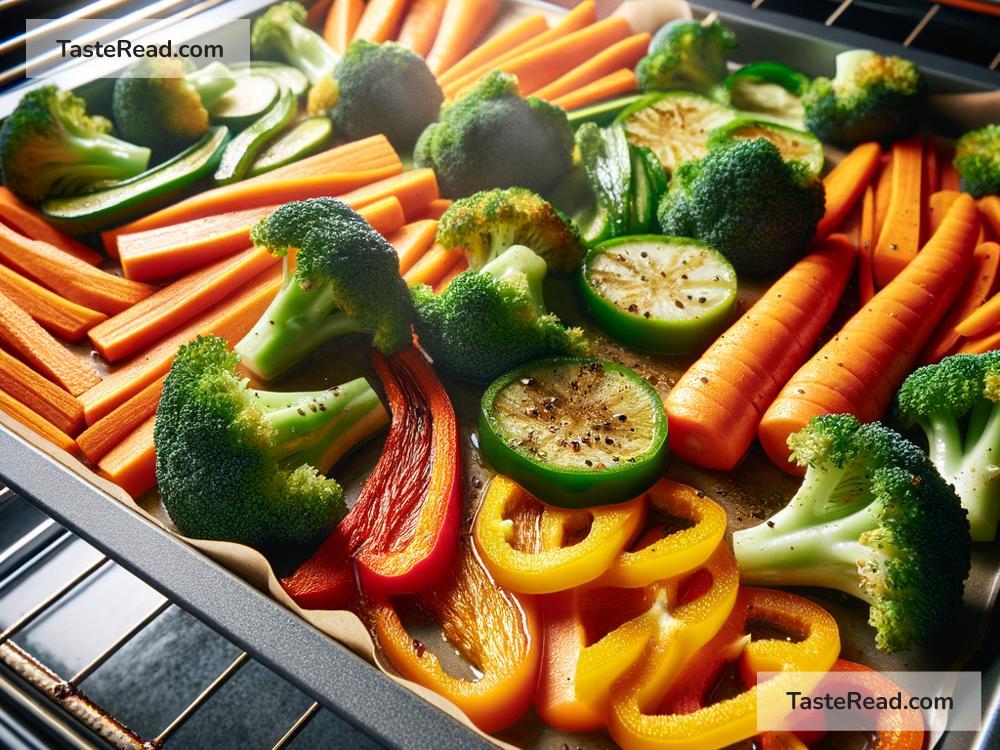How Cooking Temperature Alters the Volatile Compounds in Vegetables
Cooking is an essential part of making food palatable, safe, and enjoyable to eat. When we cook vegetables, we often notice changes in their aroma, flavor, and texture. These changes aren’t just a result of how the veggies feel in our mouths—they are largely influenced by something scientists call “volatile compounds.” These compounds are responsible for the smells and flavors that we associate with different vegetables. But did you know that cooking temperatures can dramatically alter these compounds? Let’s take a simple journey into the science of cooking to see how this happens.
What Are Volatile Compounds?
Volatile compounds are chemicals that evaporate quickly at room temperature, allowing them to reach our noses and create noticeable smells and flavors. Think of the earthy scent of mushrooms, the sweetness of cooked onions, or the sharpness of raw garlic. These smells aren’t accidental—they’re a direct result of the volatile compounds present in the veggies.
Different vegetables have unique combinations of these compounds, which make them smell and taste the way they do. For instance, sulfur compounds are responsible for the distinctive odor of cabbage and broccoli, while pyrazines give bell peppers their grassy aroma.
What Does Cooking Do?
Cooking is a transformative process. When vegetables are exposed to heat, chemical reactions occur. These reactions can change, break apart, or create new volatile compounds, which can significantly affect how vegetables smell and taste.
Let’s break this process down into simple bite-sized pieces:
1. The Role of Temperature
Different cooking temperatures lead to different changes in volatile compounds. At lower temperatures (like steaming or slow cooking), smaller transformations occur. Vegetables retain more of their natural flavors because their volatile compounds are gently heated. For example, steaming broccoli preserves its grassy, slightly sulfuric scent.
On the other hand, higher temperatures (like frying, roasting, or grilling) can lead to dramatic changes. The heat breaks apart existing volatile compounds and creates new ones. For instance, when you roast carrots, their natural sugars caramelize and form sweet, nutty compounds that weren’t there before! This is why roasted vegetables often taste richer and deeper than boiled or steamed ones.
2. Enhancing Aromas and Flavors
Heat enhances aromas by releasing some volatile compounds more effectively. For example, garlic has a compound called allicin that is released when it’s chopped or crushed. Cooking garlic at higher temperatures changes this compound into other sulfur-based molecules, which create that mouthwatering aroma we all love.
Similarly, onions contain compounds that are pungent when raw but turn sweet when cooked slowly. This transformation occurs because heat causes the sugars and amino acids to react, creating brand-new flavors.
3. Reducing or Destroying Strong Odors
Sometimes, cooking reduces the intensity of strong vegetable smells. For example, cabbage and other cruciferous vegetables (like cauliflower and Brussels sprouts) contain sulfur compounds that can be overwhelming when raw. Cooking at high temperatures breaks these sulfur compounds apart, reducing the strong odor and making the veggies taste milder and more appealing.
However, boiling vegetables for too long can destroy volatile compounds responsible for flavor, leaving them bland and lifeless. This is why overcooked spinach or asparagus can end up lacking their bright, fresh taste.
4. Creating New Savory Compounds
When vegetables are roasted, grilled, or sautéed at high temperatures, a complex process called the Maillard reaction takes place. This reaction occurs between sugars and proteins, forming entirely new compounds that boost the savory, nutty flavors in vegetables. For example, roasting sweet potatoes creates a caramelized, almost dessert-like flavor that wasn’t present when they were raw.
Why Does This Matter?
Understanding how cooking temperature alters volatile compounds helps us cook vegetables to achieve the flavors we want! Here are a few tips for how to make the most of this knowledge:
-
Preserve Delicate Flavors: If you’re cooking vegetables like spinach or zucchini, lower temperatures (like steaming or blanching) are better since they preserve the natural volatile compounds that give them their mild, fresh taste.
-
Boost Complex Flavors: For vegetables like carrots, onions, or mushrooms, roast them at high heat to create sweet and savory compounds that make them taste richer and more satisfying.
-
Tame Strong Odors: If you’re cooking cabbages, broccoli, or Brussels sprouts, higher heat can help mellow their strong sulfur smells, turning them into more appealing flavors.
Practical Applications
Cooking temperature is an important factor in creating delicious vegetable dishes. Here are some examples:
- Steamed Broccoli: Use gentle heat to highlight its fresh, green aroma and minimize pungent sulfur odors.
- Roasted Sweet Potatoes: Aim for high heat to caramelize sugars and form new, delicious flavors.
- Sautéed Mushrooms: Cook at medium-high heat to bring out their umami-rich compounds.
- Caramelized Onions: Cook slowly at low heat to break down their natural pungency and turn them sweet.
Final Thoughts
Cooking vegetables is not just about making them edible—it’s about unlocking their full flavor potential by understanding how heat affects their volatile compounds. Whether you’re steaming, boiling, roasting, or grilling, the cooking temperature you choose plays a big role in the smells, tastes, and enjoyment of your meal.
So, next time you cook vegetables, consider the science happening behind the scenes. Adjust your cooking method to enhance or preserve their volatile compounds, and you’ll be rewarded with dishes that are bursting with flavor! Cooking isn’t just an art; it’s science made delicious. Bon appétit!


